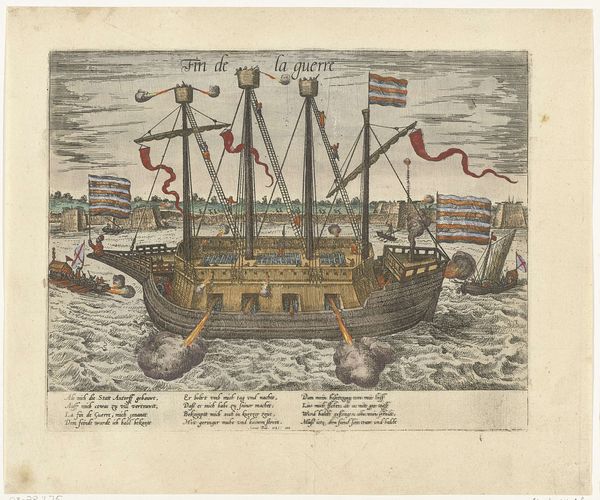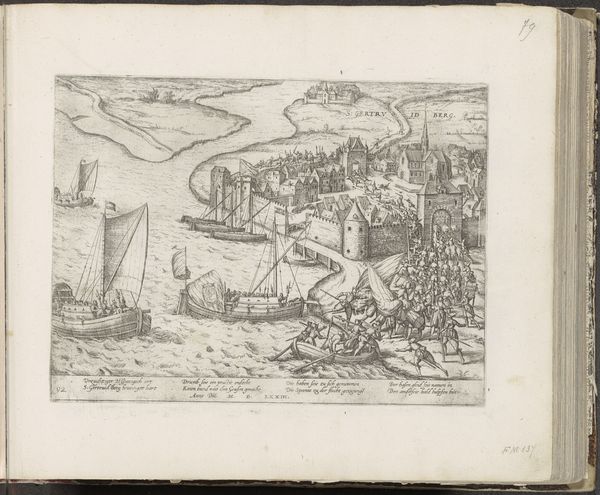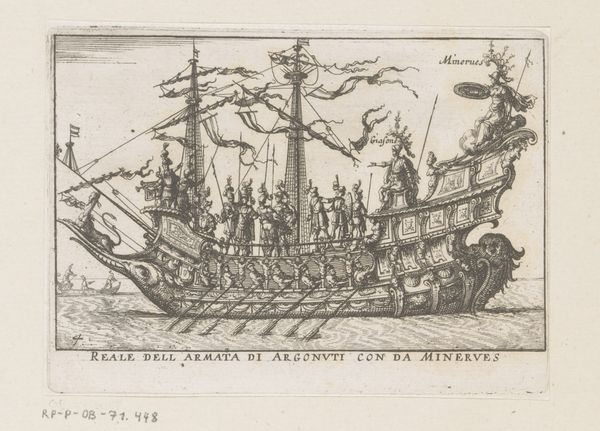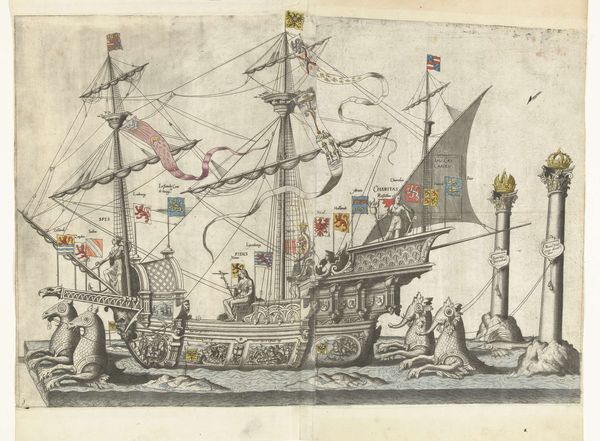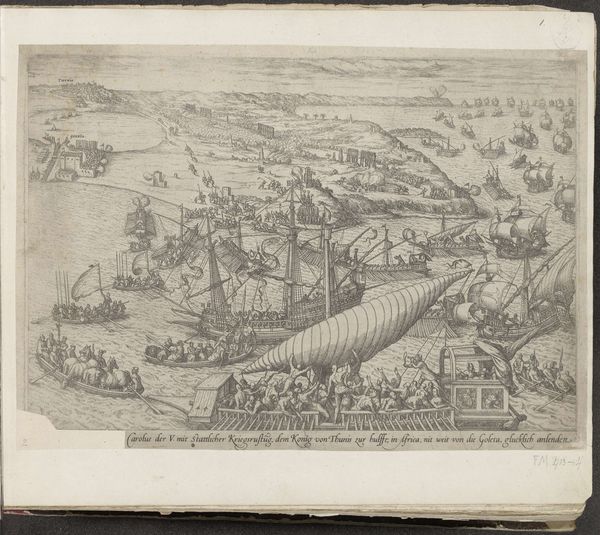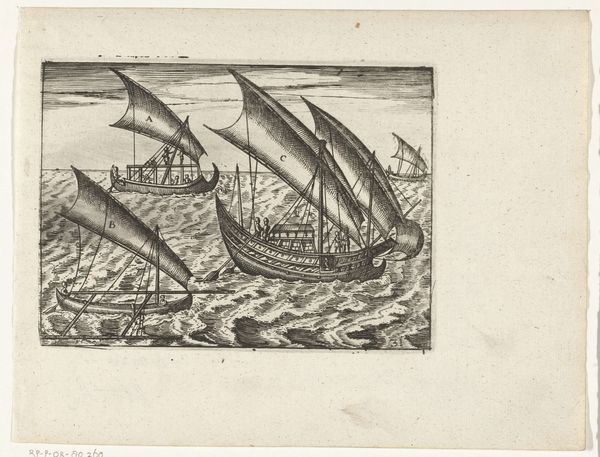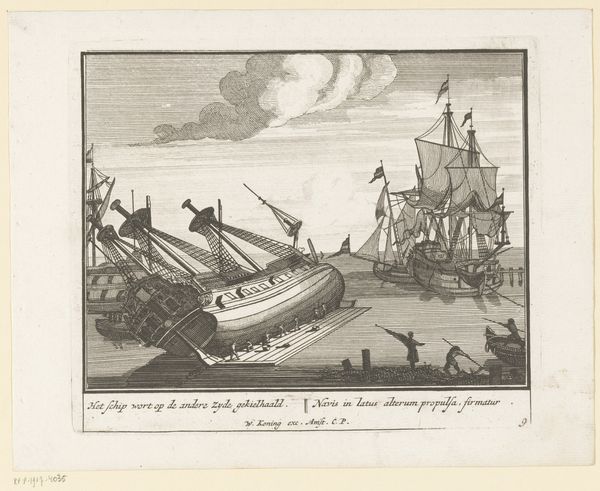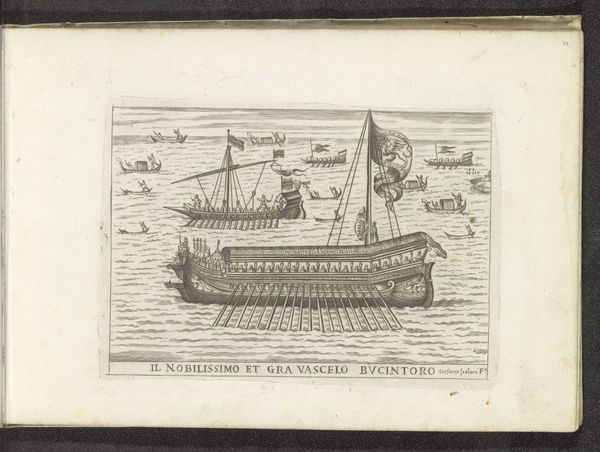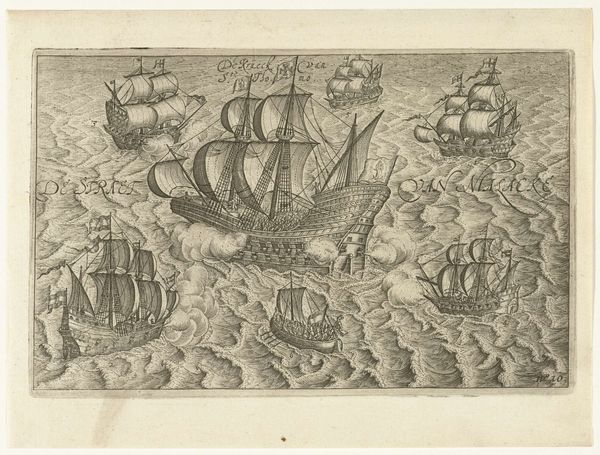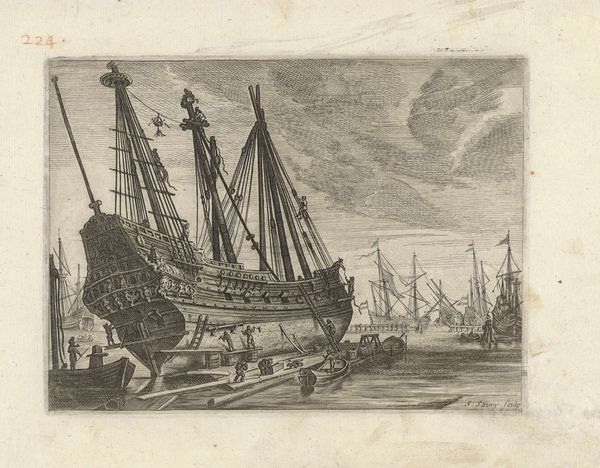
print, paper, ink, engraving
#
narrative-art
# print
#
landscape
#
mannerism
#
paper
#
ink
#
history-painting
#
engraving
Dimensions: height 210 mm, width 268 mm
Copyright: Rijks Museum: Open Domain
Curator: Here we have "Het schip Fin de la guerre, 1585," or "The Ship, the End of the War, 1585" an engraving crafted circa 1587-1591 by Frans Hogenberg. It’s currently held in the Rijksmuseum's collection. Editor: It's a busy scene! All that detail rendered in simple lines; I’m struck by the energy of the piece. The ship is blasting away, quite violently I might add. Curator: Indeed! This work acts as a piece of historical narrative, reflecting the turbulent late 16th century in Europe. The title, "The End of the War", while appearing optimistic, must be read within its sociopolitical setting. The religious and political conflicts raging throughout Europe are important when considering the significance of this ship as a symbol of both hope and unresolved tension. Editor: Considering it's an engraving, I find myself focused on the marks. Notice how Hogenberg uses hatching to create the illusion of volume in the sails, and texture in the water. This demonstrates the labour intensive approach of the printing. There’s also an inherent commentary on production methods through its wider accessibility to a viewing public. Curator: Absolutely, and the print’s materiality allows for wider dissemination, effectively influencing public sentiment, wouldn't you agree? It allows discussion around class, around access to visual rhetoric, and power. This distribution also has considerable relevance, when the rise of the printing press transformed modes of social critique. Editor: This readily available paper form of art really drove accessibility beyond elite circles, shifting perception, no question. By its construction, this print makes a subtle statement regarding accessibility of artmaking and knowledge at the time. Curator: Examining Hogenberg's print, one must remember that depictions of naval power carried strong ideological weight. Its layered representations highlight the war as a catalyst for reshaping geopolitical identities. Editor: For me, looking at it this way, it underscores the transition of craft into industrial manufacture with printing, transforming image consumption. This gives insight into a time when commodities’ material presence shaped understanding. Curator: Yes. This work certainly challenges traditional, patriarchal narratives by highlighting shifts in European socio-political structures. Editor: The level of detailed inscription combined with material realities surely does complicate ideas of how craft shapes and reflects identity, power, and a move toward commodity culture in art.
Comments
No comments
Be the first to comment and join the conversation on the ultimate creative platform.

